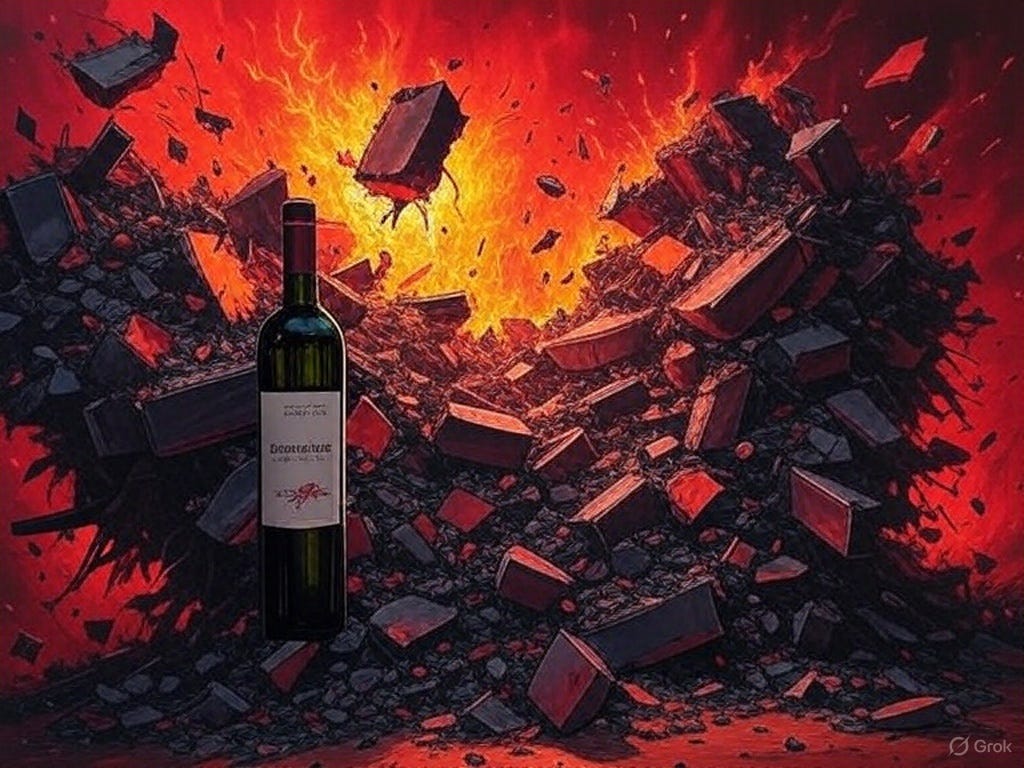The Key Solution to Wine's Downturn is Destruction and Demolition
Power and opportunity must be diffused within the industry, not concentrated
Every day, we see evidence of the struggling alcohol marketplace. We see reports showing wine, beer, and spirits brands and categories underperforming from a year, two years, or ten years ago. We see investors unloading beverage stocks. We hear tell of younger people stepping away from alcohol. Anti-alcohol nannyism is now harming the marketplace. Interest rates are too high. Tariffs are with us. Inflation makes everything more expensive for both consumers and the industry. Cannabis is a new competitor. The bad news is everywhere. But the solutions are few and far between.
I and everyone else working in the alcohol industry, however, knows what one key solution is: Dismantle and reform the three-tier system with the incomprehensible damage that it brings to the alcohol beverage marketplace.
Recently, a very astute observer and participant in the industry outlined the problem with the three-tier system. Alex Koral, general counsel for compliance company ShipCompliant, wrote “When the Middle Shrinks: What Consolidation in the Wholesaler Tier Means for the Entire Market”.
The article outlines the damaging consolidation that has occurred at the wholesale tier over the past decades and observes:
“The number of producers and retailers has exploded, but the number of distributors—the “middle tier”—has steadily shrunk. That shrinking middle tier is creating market access challenges that have reignited conversations about alternatives…Today, the top 10 wholesalers control 80% of the market, with the top two accounting for over 50% of total revenue. That’s a dramatic shift from a system originally designed to create balance…Distributors, now faced with managing immense product volume, often prioritize high-volume accounts like large grocery chains. This isn’t necessarily a judgment call, it’s a business reality. Larger accounts mean streamlined logistics and predictable sales. But for smaller, independent retailers, this shift can make it difficult (if not impossible) to access a diverse range of craft brands from smaller producers.”
This keen observation that Koral offers is followed up by an even keener question:


